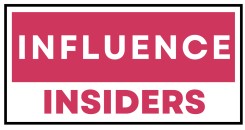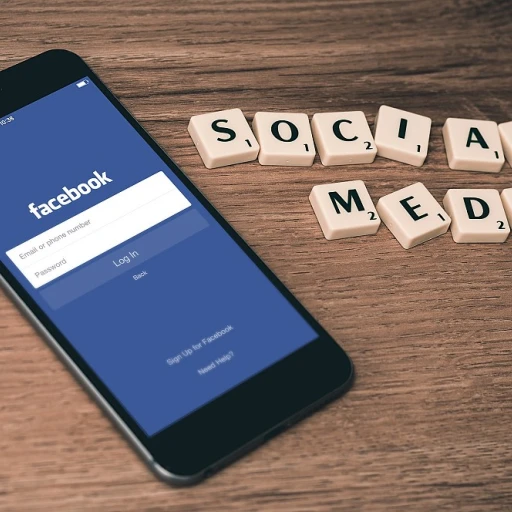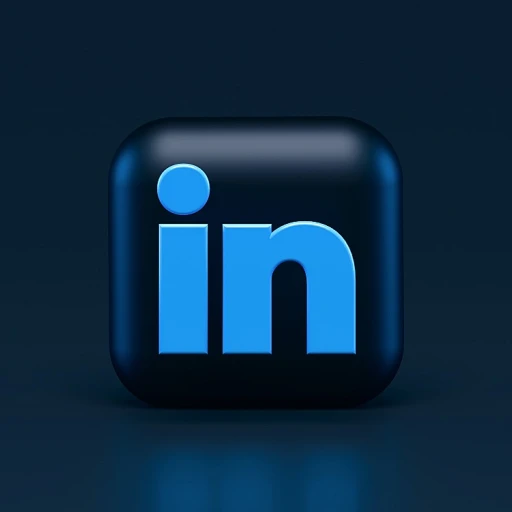
The Basics of Subscriber Acquisition Cost
Understanding Subscriber Acquisition Cost (CAC)
In the world of social media influencers and business growth, understanding the average cost of gaining subscribers, known as Subscriber Acquisition Cost (CAC), is essential. As influencers and companies aim to increase their audience and convert followers into customers, knowing how much it costs to acquire these subscribers becomes crucial.
The Subscriber Acquisition Cost is a metric that helps businesses and influencers determine how much they are spending to acquire a new subscriber. It involves calculating the total marketing expenses used to attract new followers, divided by the number of customers acquired over a specific period. This cost can encompass several marketing channels, including social media, email marketing, and content marketing, to name a few.
For businesses, especially in the SaaS sector, understanding the relationship between CAC and the customer lifetime value (LTV) is pivotal. The LTV/CAC ratio is a critical indicator of whether customer acquisition strategies are profitable. Ideally, businesses should aim for a healthy ratio where the LTV significantly outweighs the CAC. This means that the average customer acquired brings more value over their lifetime than what was spent on acquiring them.
Furthermore, the concept of CAC is not just about acquiring customers but also retaining them. While acquiring new customers is essential for growth, the churn rate, or the rate at which subscribers stop engaging or stop purchasing, plays a role in the overall cost-effectiveness of subscriber acquisition efforts. Thus, effective strategies must consider both the cost of acquiring and retaining customers to optimize growth.
As you dive deeper into understanding the dynamics of subscriber acquisition, you'll find that various factors can influence these costs, from the nature of the product or service to the chosen marketing strategies and even the type of content shared. Evaluating successful case studies can also provide insights into optimizing these costs for your business or personal brand.
Factors Influencing Subscriber Acquisition Cost
Determinants of Subscriber Acquisition Costs
Understanding the expense of acquiring subscribers is essential for businesses aiming to expand their audience. Several factors influence the cost of subscriber acquisition, and being aware of these can help in strategizing more efficiently. Firstly, the nature of your product or service significantly impacts acquisition costs. A SaaS company, for example, typically experiences different cost structures compared to a consumer goods business. The complexity, demand, and niche of your product all play crucial roles. Marketing strategies also dictate the cost. Whether using email marketing or leveraging various social media channels, each channel has unique characteristics and costs associated. Email marketing often comes with a lower average CAC compared to paid advertising, particularly if your email list is well-segmented and engaged. Another key factor is the lifetime value (LTV) of a customer. If the LTV to CAC ratio is skewed, it might indicate unsustainable spending on acquiring subscribers. A business should aim for a favorable ratio, enhancing the cost-effectiveness of its acquisition strategies. The churn rate is another crucial consideration. High churn can inflate acquisition costs as businesses need to acquire more customers to maintain the same level of growth. Reducing churn can make growth more sustainable and reduce the recurring need for high acquisition expenses. Furthermore, external factors such as market conditions, competition, and platform algorithm changes can affect costs. For instance, increased competition within a market can drive up the cost of acquiring customers as businesses bid for the same audience. For more insights into social media costs in influence marketing, check out the incentive distribution rights in social media influence, which can affect acquisition strategy and expenses.Strategies to Optimize Subscriber Acquisition
Effective Approaches to Minimize Acquisition Costs
Optimizing subscriber acquisition is crucial for reducing costs and enhancing growth. To achieve this, businesses must employ smart strategies that focus on value-driven customer engagement and maximizing marketing efficiency. Below are key approaches that help in achieving these goals.
- Leveraging Social Media Channels: Social media has emerged as a powerful tool for attracting new customers. By crafting targeted campaigns, businesses can engage users and enhance their subscriber base effectively. Engaging content, coupled with data insights, can streamline the acquisition process and reduce costs.
- Email Marketing Campaigns: A well-crafted email marketing strategy can significantly enhance subscriber acquisition. With personalized messaging and strategic segmentation, companies can foster relationships with potential customers, driving conversions and optimizing customer lifetime value (LTV).
- Optimizing Content Marketing: Creating valuable, informative content not only attracts interest but also builds trust. Quality content cultivates a brand's authority and credibility, essential factors in attracting new subscribers at a lower acquisition cost.
- Refining Sales Funnels: Streamlining the sales funnel allows for a smoother transition from prospecting to conversion. Businesses should continuously assess their funnels to address any friction points that could deter customer acquisition, ultimately lowering the average CAC.
- Utilizing SaaS Tools: Software as a Service (SaaS) tools can automate and enhance marketing efforts, making it easier to analyze customer behavior and channel effectiveness. This investment not only aids in reducing churn rate but also optimizes customer lifetime LTV.
- Acquisition Cost Analysis: Regular evaluation of CAC and LTV ratios provides businesses with insights into the efficiency of their strategies. This assessment can drive strategic adjustments and innovations for sustainable subscriber growth.
For social media influencers and businesses seeking to understand the subtleties of acquiring customers, the journey doesn't end at implementation. Measuring the success of these strategies, using key metrics and tools, is essential to ensure continued growth and minimize expenses in subscriber acquisition.
To learn more about the dynamic world of influencers and content creation, check out this resource on the distinctions between influencers and content creators.
Measuring Success: Metrics and Tools
Tracking the Effectiveness of Subscriber Acquisition Efforts
When it comes to optimizing the acquisition of subscribers, it's crucial to measure the success of your strategies effectively. By analyzing key metrics, you can determine which channels and tactics work best for your brand. This analysis will inform future decisions and ensure a healthy balance between subscriber growth and acquisition costs.
Key Metrics to Monitor
- Customer Acquisition Cost (CAC): This metric highlights the costs incurred to acquire a customer. By understanding your CAC, you can ensure it doesn’t outweigh the customer lifetime value (LTV), which is essential for profitability.
- LTV to CAC Ratio: A critical measure for evaluating profitability. An ideal ratio exceeds 3:1, indicating that the value a customer brings over their lifetime is triple the cost of acquiring them.
- Churn Rate: Monitor this to understand the percentage of subscribers you lose over a given period. A high churn rate indicates potential issues in your product or service that might be impacting satisfaction and engagement.
- Number of Customers Acquired: Track this alongside the average CAC to assess how cost-effective your acquisition strategies are across different marketing channels.
Tools for Analyzing Metrics
Employing the right tools can significantly enhance your understanding of customer data:
- Customer Relationship Management (CRM) Systems: These systems can help track customer interactions and provide insights into acquisition efforts.
- Analytics Platforms: Tools like Google Analytics offer detailed reports on the performance of various channels and strategies, allowing for data-driven decision-making in your marketing plan.
Ensuring Insight-Driven Business Decisions
Regularly reviewing these metrics will help you adjust marketing expenses, pivot strategies, and ultimately improve the effectiveness of your subscriber acquisition efforts. Remember to align your insights with broader business goals, ensuring that all aspects of your growth strategy contribute positively to your bottom line.
Case Studies: Learning from Successful Influencers
Learning from Excellence in Influencer Strategies
Successful influencers have unlocked the secret to optimized subscriber acquisition by integrating a variety of strategies that keep costs manageable while expanding their reach. Analyzing these influencers' methods provides valuable insights into balancing acquisition costs with effective subscriber growth. One common tactic is leveraging multiple marketing channels. Influencers diversify platforms, using social media, email marketing, and targeted paid ads. This multi-channel approach helps broaden their reach and lower the average cost associated with acquiring each customer. Additionally, influencers implement personalized content that resonates with their audience, enhancing engagement and driving conversions. Another strategic component is the use of data analytics to guide marketing decisions. Successful influencers monitor key metrics, such as the customer acquisition cost (CAC) and the lifetime value (LTV) of their subscribers. This data-driven strategy allows them to maintain a favorable LTV to CAC ratio, ensuring sustainable growth. Influencers also focus on community building, fostering loyalty, and reducing churn rates. By prioritizing customer lifetime value, they create strong relationships that extend beyond mere transactions. Interactive content and community engagement keep subscribers invested, boosting customer retention and mitigating additional acquisition costs. In summary, influencers who shine in subscriber acquisition often attribute their success to combining various marketing expenses with a focus on long-term customer relationships. By studying these techniques, businesses and aspiring influencers can craft their strategies, optimizing to achieve favorable growth and cost metrics.Future Trends in Subscriber Acquisition
Anticipating Future Trends in Subscriber Acquisition
In a rapidly evolving digital landscape, staying ahead of the curve in subscriber acquisition strategies is crucial for sustaining business growth. While we've explored various factors influencing subscriber acquisition costs and strategies to optimize them, it's essential to acknowledge emerging trends shaping the future of this domain.- AI and Machine Learning Integration: As AI and machine learning technologies advance, they will become integral in predicting customer behavior, enhancing personalized marketing strategies, and optimizing customer acquisition cost (CAC). Businesses stand to benefit by harnessing these technologies to create predictive models that can identify high-value customers, thus improving the lifetime value (LTV) and CAC ratio.
- Rise of Omnichannel Marketing: With consumers interacting across various platforms, an omnichannel marketing approach is no longer optional. A seamless customer experience across channels, from social media to email marketing, will be vital in capturing and retaining subscribers. Companies that perfect this strategy are likely to lower their average CAC while boosting customer engagement and sales.
- Increased Focus on Customer Lifetime Value: Understanding and maximizing the lifetime LTV of subscribers will continue to be a significant focus. Businesses are increasingly realizing that the upfront costs of acquiring customers can be offset by strategies that cultivate long-term loyalty and increased spend per customer.
- Sustainability and Ethical Considerations: Today's consumers are more environmentally and ethically conscious than ever. Influencers and businesses that align their products and marketing strategies with sustainable practices may see a positive impact on subscriber acquisition. Shifts towards ethical business practices can engender trust and loyalty, effectively reducing churn rate and increasing the number of customers acquired.













